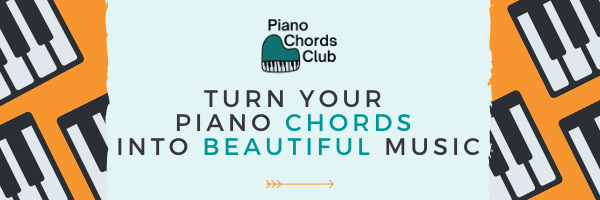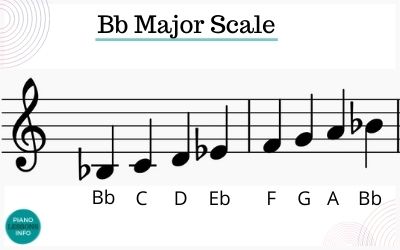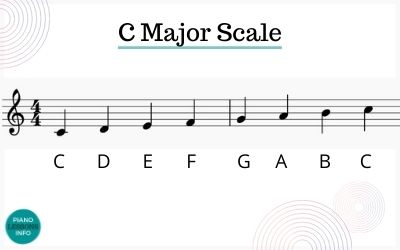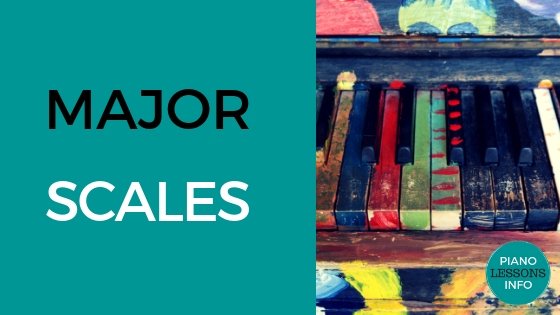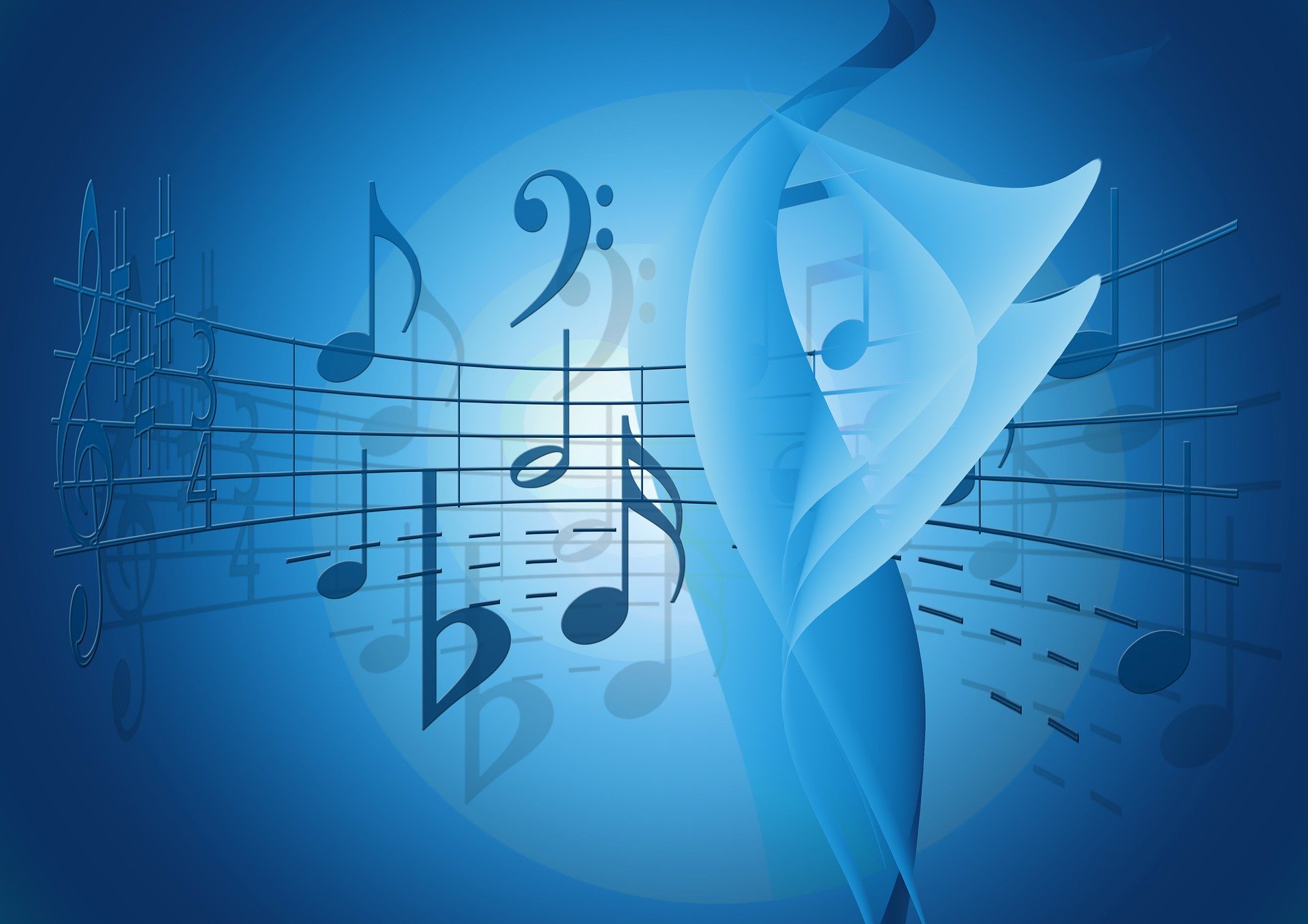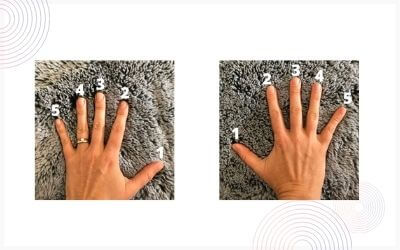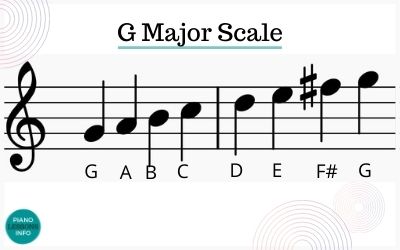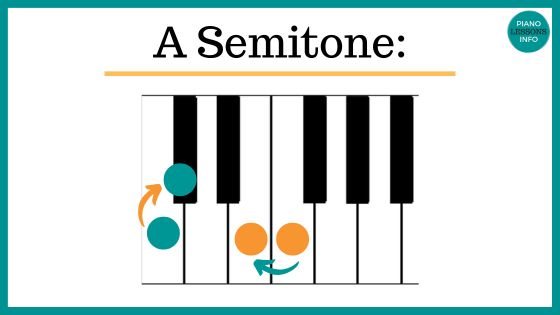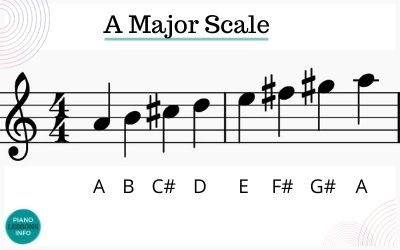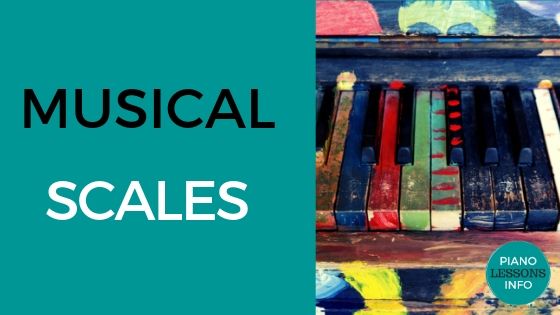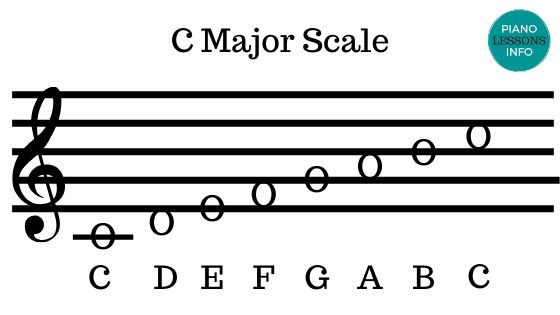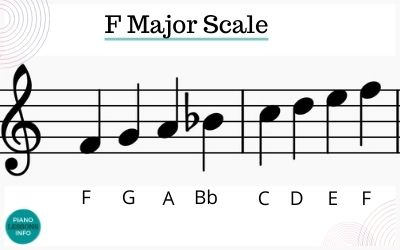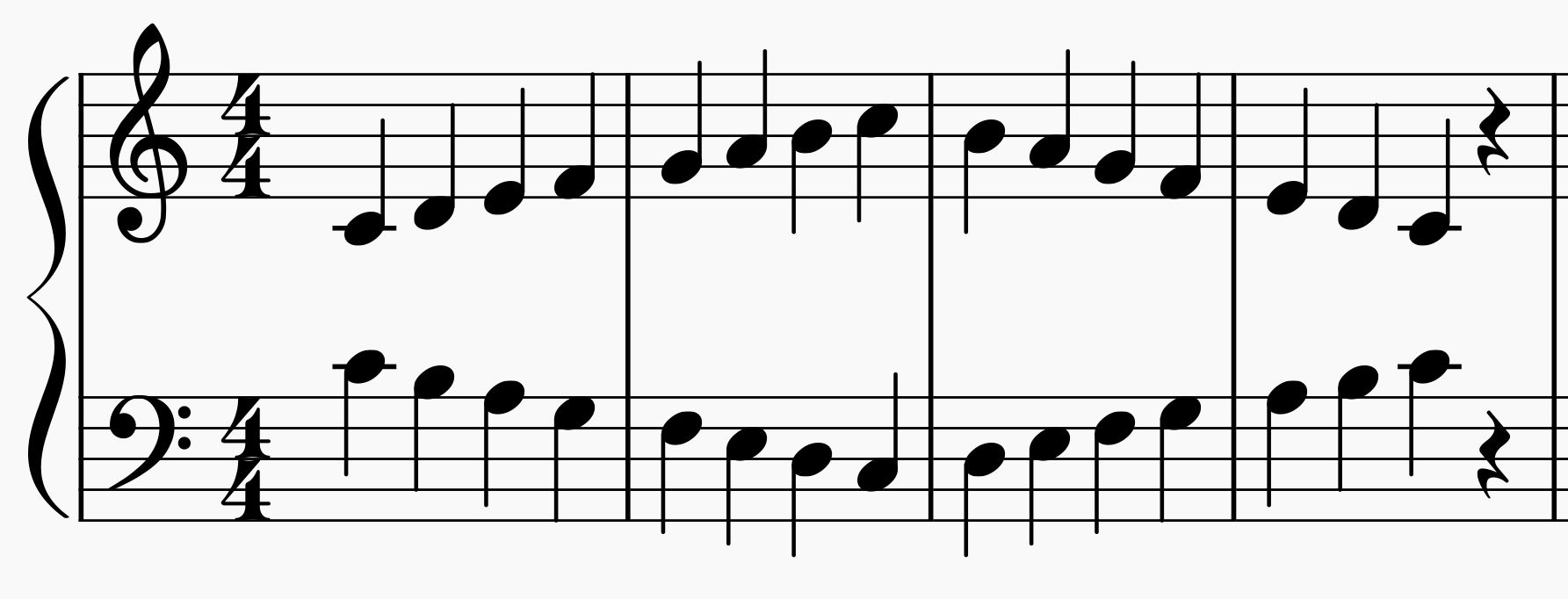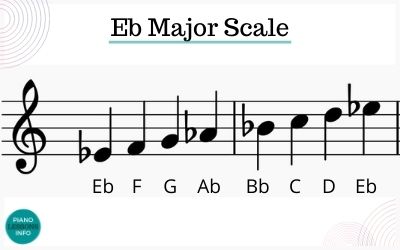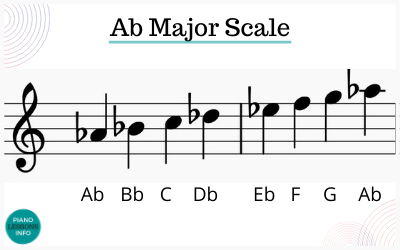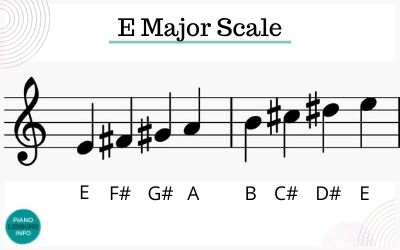D Major Scale on Piano
Notes, Fingering & How To
The D major scale on piano is an important scale to learn and one of the first few scales any piano student learns to play.
This scale has 2 sharps - F# and C#.
Here you'll find a picture / diagram of the scale, fingering (or finger patterns) for playing the scale on piano, the notes and a few other extras.
Notes of D Major Scale
The D major scale goes from D to D and has 2 sharps (both black notes). The key of D has F# and C#.
The notes of the D major scale are: D E F# G A B C# D
When playing this scale, it's important to remember the sharps both going up and going back down again. If something sounds off or not quite how it should, take a look at the sharps and check if you're playing them all.
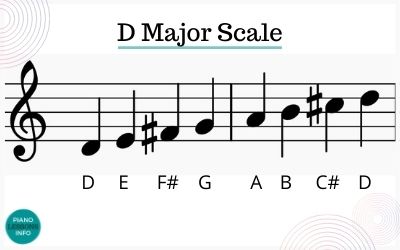 Notes of the D Major Scale
Notes of the D Major ScaleVideo Tutorial: D Major Scale On Piano
D Major Scale Fingering For Piano
When playing the D major scale on piano, you can use the basic scale fingering that you use for most scales (that start on white notes).
This is the fingering pattern you need to use for the D scale.
Right Hand: 1 2 3 1 2 3 4 5
Left Hand: 5 4 3 2 1 3 2 1
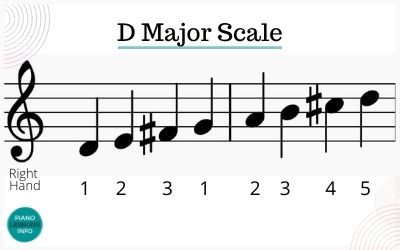 Fingering for Right Hand
Fingering for Right HandIn your right hand when you play this scale, your thumb will cross under finger 3 - which is the F# - when going up. (Finger 3 will cross back over when going down.)
That's an easy way to remember for the right hand, cross after the sharp.
In left hand, finger 3 will cross over your thumb when going up. You'll have your C# just before the final note of the scale. Finger 3 will cross under your thumb (on B) when going down.
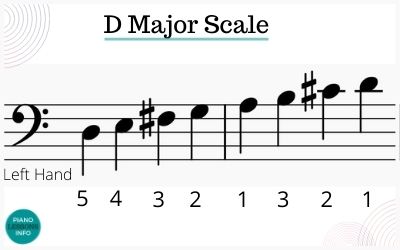
Scales Resource for Piano:
Fingering for all scales, including the D major scale on piano, can be found in the Complete Book of Scales, Chords and Arpeggios here on Amazon (this is an affiliate link).
This is a handy resource when learning scales.
D Major Scale - Fingering Up & Down
To play the D major scale ascending and descending, use the following fingering.
Note: if you're just beginning and this seems complicated, work on just going up only. After that is comfortable (enough), move onto going back down again.
Here are pictures / diagrams of the D major scale on piano going both up and back down for the treble clef / right hand and the bass clef / left hand.
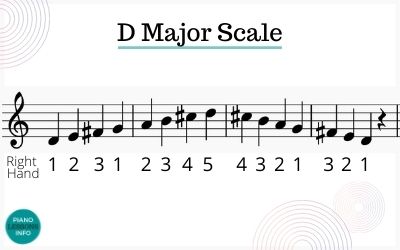 Fingering for Right Hand - D Major Scale on Piano
Fingering for Right Hand - D Major Scale on Piano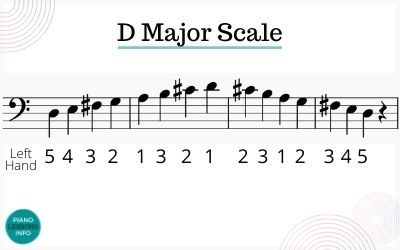 Fingering for Left Hand - D Major Scale on Piano
Fingering for Left Hand - D Major Scale on PianoD Major Scale - 2 Octaves
When playing the D major scale 2 octaves, you'll need cross you thumb (1) under the C# when going up for the second octave in your right hand. Left will cross finger 4 onto E when going up.
Right Hand 2 Octave Fingering for D Major:
Up: 1 2 3 1 2 3 4 1 2 3 1 2 3 4 5
Down: 5 4 3 2 1 3 2 1 4 3 2 1 3 2 1
Left Hand 2 Octave Fingering for D Major:
Up: 5 4 3 2 1 3 2 1 4 3 2 1 3 2 1
Down: 1 2 3 1 2 3 4 1 2 3 1 2 3 4 5
The Key Signature of D Major
You now know the key signature of D major - which is great!
The key signature of D major is 2 sharps, F# and C#.
(If you have learned the G major scale, you'll remember that it has a F#. All keys with more than 1 sharp will all have F#, all keys with 2 or more sharps will have F# and C#.)
Understand the D Chord From D Scale
Another great thing you can learn and understand now that you know the D major scale is the D major chord.
This chord is written as just a D and major chords are built off of the 1st, 3rd and 5th notes of the major scale.
If you look at the picture of the scale, you can see the 1st, 3rd and 5th notes are D F# A. Those three notes make the D chord and you can play that now as well.
What's important to take note of here is that you're playing the F# and not the F. And this is why. You're playing F# because it's part of the scale and key of D. This is an important piece of chord theory to understand.
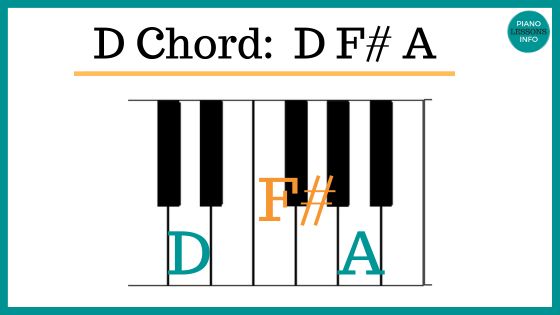
Let's add onto this also and look at the DM7 chord. This is a D major seventh chord with the chord formula of the 1st, 3rd, 5th and 7th notes of the scale.
If you look at the scale, you can see those notes are D F# A C#. Both the F# and C# are played (instead of F and C natural) because they are part of the key signature and scale.
What To Practice?
This week, practice the D major scale in any of the following ways (depending on your level):
- 1 octave, hands separately
- 1 octave, hands together (slow at first!)
- 2 octaves, hands separately
- 2 octaves, hands together
Also try play the D chord when you get to the end of your scale.
Further Resources:
For more major scales, visit the major scales page.
Complete Book of Scales, Chords and Arpeggios here on Amazon (this is an affiliate link).
Free Download:
Ultimate Chord Cheat Sheet
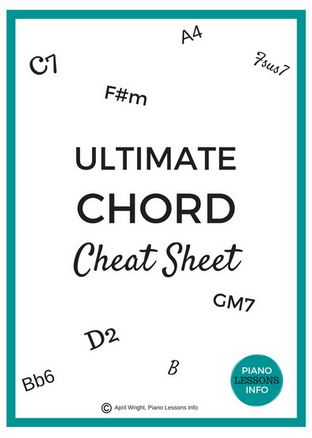
Subscribe below and get free access to the (printable) Ultimate Chord Cheat Sheet.
FAQ for D Major Scale on Piano
Why does the D Major scale have sharps?
Why does the D Major scale have sharps?
The D Major scale has two sharps (F# and C#) to maintain the specific pattern of whole and half steps / tones that define a major scale. This pattern is whole step-whole step-half step-whole step-whole step-whole step-half step.
All major scales are built this way and so some scale have sharps, some have flats and C major has neither.
Is the fingering the same for all major scales?
Is the fingering the same for all major scales?
While there are some similarities, not all major scales have the same fingering. The fingering for each scale is designed to allow you to smoothly navigate the pattern of whole and half steps that define the scale, and some scales require different fingering due to their specific set of notes.
D major scale and many others use the basic scale fingering making it one of the good ones to learn in the beginning.
What's the relative minor scale of the D Major scale?
What's the relative minor scale of the D Major scale?
The relative minor of the D major and so the D major scale is B minor. This means that B minor shares the same key signature as D major (two sharps) and contains the same notes, but starts on B.
Can I play the D major scale on other instruments?
Can I play the D major scale on other instruments?
Yes, you can play the D Major scale on any instrument that can play melodies, such as the violin, flute, or guitar. The fingering or technique will be different, but the sequence of notes (D, E, F#, G, A, B, C#, D) will be the same.
Why is learning the D major scale important?
Why is learning the D major scale important?
Learning the D Major scale is a great way to improve your understanding of music theory, and it's a commonly used scale in many genres of music. Plus, it's crucial for building technique, understanding key signatures, and improving your improvisation skills.
What chords start on each note of the D major scale?
What chords start on each note of the D major scale?
When you play a chord within the key signature of D major and starting on each note of the major scale, this is what chords you get: D-Em-F#m-G-A-Bm-C#°.
Recent Articles
-
Piano Notes Chart
Nov 20, 23 10:21 PM
Find a piano notes chart for treble clef and bass clef notes as well as the different types of notes. -
D Chord on Piano + Diagram, How To & Theory
Oct 24, 23 12:20 AM
Learn how to play the D chord on piano with diagram, fingering, D/A, D/F# and a theory explainer. -
Diminished Piano Chords: Chart & How to Make Them
Oct 09, 23 09:23 PM
Learn the different diminished piano chords and how to make them. Here you'll find both a diminished chord chart and an explanation.
- Home
- Major Scales
- D Major Scale on Piano
Free Download:
Ultimate Chord Cheat Sheet

Subscribe below and get free access to the (printable) Ultimate Chord Cheat Sheet.



